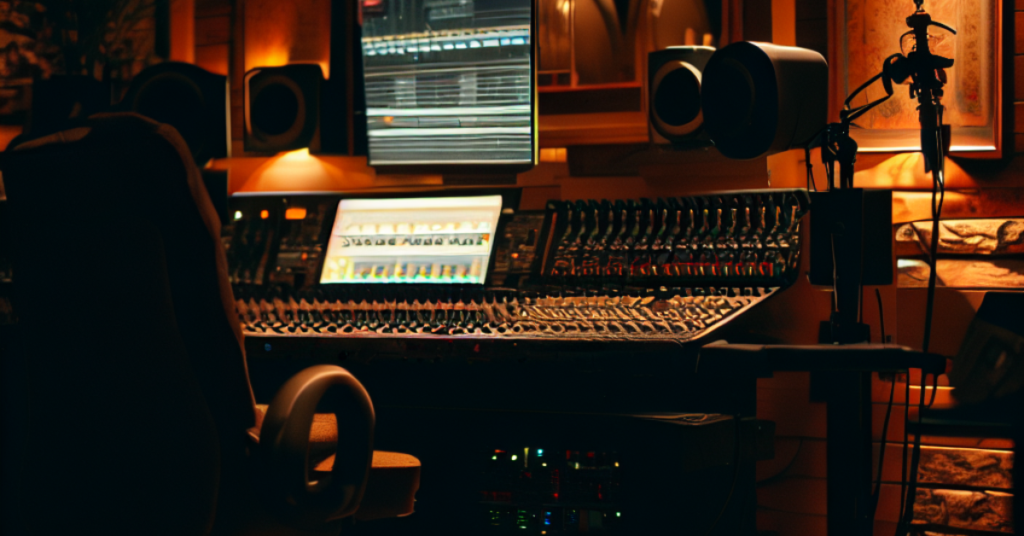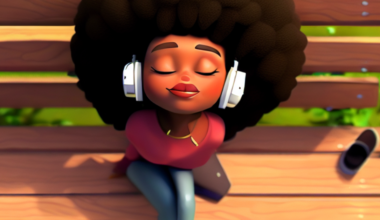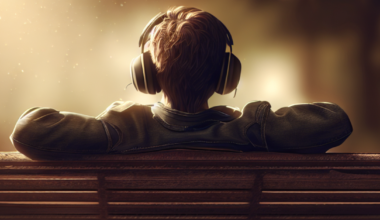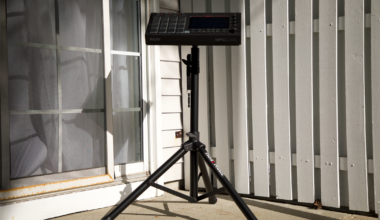
So, you’ve decided to take the plunge. You’re ready to transform that spare room, corner of your bedroom, or even your garage (hey, it worked for Steve Jobs) into your very own home recording studio. Let’s talk about your home studio setup.
You’re standing at the foot of a mountain, gazing up at the peak, wondering how on earth you’re going to get there. But fear not, future music mogul! We’re here to be your sherpa, guiding you through the treacherous terrain of audio cables, MIDI controllers, and software plugins.
Setting up your first home recording studio can feel a bit like being a kid in a candy store. So many shiny things to choose from! But just like too much candy can lead to a stomachache, too much gear can lead to an empty wallet and a room full of stuff you don’t really need.
That’s why we’ve put together this handy guide. We’re going to cut through the noise and give you the top 10 essentials you’ll need to get your home studio up and running.
So, buckle up, put on your producer hat (it’s like a hard hat, but cooler), and let’s dive in!
These are the top 10 essentials you’ll need to get your home studio up and running.
Computer: The Brain of Your Operation
First things first, you're going to need a computer. This isn't just any old piece of equipment. It's the brain of your operation, the command center of your musical spaceship. It's where all the magic happens, from laying down your first beat to putting the finishing touches on your mix.
Whether you go for a desktop or a laptop, Mac or Windows, is entirely up to you. It's like choosing between a sports car and an SUV. Both will get you from A to B, but the experience might be a bit different.
The two key things to consider are the processor speed and the RAM. The processor is like the engine of your car. The faster it is, the smoother your journey will be. And the RAM? That's like the trunk space. The more you have, the more gear (or in this case, software) you can carry.
If you're looking for a solid computer that won't break the bank, consider the Apple MacBook Pro. With its powerful processor and ample RAM, it's a popular choice among music producers. Plus, it's portable, so you can take your studio with you wherever you go.
Remember, a computer is an investment. It's worth spending a bit more upfront to get a machine that will serve you well for years to come.
Digital Audio Workstation (DAW): Your Musical Canvas
Next up, you'll need a DAW. This is the software you'll use to produce your music. Think of it as your musical canvas. It's where you'll paint your sonic masterpieces, layer by layer, until you've created a work of art that even Picasso would be proud of (if he were into beats, that is).
There are several DAWs out there, each with its own set of features, workflow, and learning curve. It's like choosing between different brands of paint. Some artists swear by oil paints, while others prefer acrylics. The best one for you depends on your personal preferences and needs.
Popular DAWs include Ableton Live, FL Studio, and Logic Pro. Ableton Live is known for its intuitive interface and powerful live performance capabilities. FL Studio is loved for its step sequencer and pattern-based workflow. And Logic Pro? It's like the Swiss Army knife of DAWs, packed with a plethora of instruments and effects.
If you're just starting out, check out our article on the top DAW's for making beats. We dive deep into the best digital audio workstations for music production.
Remember, the best DAW is the one that you feel comfortable using. So, don't be afraid to try out a few demos before making your decision.
Audio Interface: The Bridge Between Worlds
The audio interface is the magical box that connects your computer to everything else in your studio. It's like the bridge between the digital world of your computer and the analog world of your microphones and instruments.
It has inputs for things like microphones and instruments, and outputs for your speakers or headphones. It's like a busy airport, with signals coming in and going out, all under the control of the air traffic controller (that's you).
But an audio interface does more than just connect things. It also converts the analog signals from your microphones and instruments into digital signals that your computer can understand, and vice versa. This process, known as analog-to-digital and digital-to-analog conversion, is crucial for recording and playback.
There are many brands out there that make quality, affordable audio interfaces. If you're just starting out, a great option is the Focusrite Scarlett 2i2. It's compact, easy to use, and offers excellent sound quality for its price. Plus, it comes with two inputs, so you can record a microphone and an instrument at the same time.
Remember, the audio interface is the heart of your home studio. So, choose wisely and invest in a quality piece of gear that will serve you well for years to come.
Speakers: Your Window into Sound
Speakers, or studio monitors, are essential for hearing your mixes. They're like your window into the world of sound. A good pair of speakers can reveal the intricate details of your mix, helping you make better decisions and create better music.
You don't need to break the bank on these right away. Even budget monitors can get the job done. It's like buying a car. Sure, a Ferrari would be nice, but a reliable Honda can still get you where you need to go.
The key is to learn how to use them properly. Just like you wouldn't drive a car without learning the rules of the road, you shouldn't use studio monitors without understanding how to position them and treat your room for the best sound.
If you're just starting out, a great option is the KRK Rokit 5 G4. These speakers are affordable, compact, and offer excellent sound quality for their price. Plus, they come with built-in room correction technology, which can help you get the best sound in any room.
Remember, your speakers are your ears' best friend. Treat them well, and they'll help you create music that sounds great on any system.
MIDI Controllers: Your Hands-On Approach to Music Production
MIDI controllers are a great way to get hands-on with your music. They're like the steering wheel and pedals of your musical vehicle, giving you direct control over your DAW and plugins.
There are two main types of MIDI controllers: pad controllers and keyboard controllers. Pad controllers are great for drum programming and sample triggering. They're like a digital drum kit, letting you tap out beats with your fingers. Keyboard controllers, on the other hand, are perfect for playing melodies, chords, and basslines. They're like a digital piano, but much more portable and versatile.
If you're just starting out, a good option is the Akai MPK Mini Mk3. It's affordable and gives you a bit of everything: keys, pads, and knobs. It's like the Swiss Army knife of MIDI controllers, ready to tackle any musical task you throw at it.
Remember, a MIDI controller is an extension of your musical creativity. Choose one that feels good to play and fits your workflow, and you'll be making beats in no time.
Software Plugins: The Spices in Your Sonic Stew
Software plugins, VST effects, and sample packs are a fun and creative way to expand your sound palette. They're like the spices in your sonic stew, adding flavor and character to your music.
There are thousands of plugins out there, each offering different sounds and capabilities. You've got synthesizers for creating melodic and harmonic elements, drum machines for laying down beats, effects for shaping and coloring your sounds, and sample libraries for adding real-world textures.
But be careful, it's easy to get carried away and spend a lot of money on plugins you don't really need. It's like going to a buffet. Sure, you could pile your plate high with every dish on offer, but you'll probably end up feeling bloated and unsatisfied.
Start with the essentials. Most DAWs come with a decent selection of plugins to get you started. Once you've learned how to use these, then you can start exploring third-party plugins.
A good place to start is our top affordable VST plugins list or our top VST plugins for hip hop producers.
Remember, the key to using plugins effectively is to learn them inside and out. So, don't rush to buy the latest and greatest plugin. Instead, take the time to master what you have and make the most of it.
Microphone: Your Sonic Magnifying Glass
A microphone is like a sonic magnifying glass. It picks up sound waves from the air and converts them into electrical signals that your audio interface can understand. Not only can you record vocals, but you can also record your own sounds and percussions. This can add a unique and creative touch to your productions.
Choosing the right microphone can feel a bit like being Goldilocks in the three bears' house. Some microphones might feel too big and bulky, others too small and flimsy. But with a bit of research and patience, you'll find the one that's just right.
If you're just starting out, a great option is the Audio-Technica AT2020. It's a versatile condenser microphone that offers a great balance of performance and affordability. It's like the Toyota Corolla of microphones - reliable, durable, and excellent value for money.
Remember, a good microphone can capture the nuances and details of your voice or instrument, so it's worth investing in a quality piece of gear. And don't forget to get a pop filter to reduce unwanted noise and a sturdy stand to hold your mic.
Headphones: Your Personal Sonic Microscope
A good pair of headphones is like a personal sonic microscope. It allows you to zoom in on your mix and hear every detail, every nuance, every subtle shift in tone and texture. They're essential for checking your mixes, recording audio, and for those late-night sessions when you don't want to disturb your neighbors (or your cat).
When choosing headphones, there are two main types to consider: open-back and closed-back. Open-back headphones are great for mixing because they provide a more accurate and natural sound. However, they also let sound in and out, so they're not ideal for recording vocals or for use in noisy environments.
Closed-back headphones, on the other hand, provide good isolation, which makes them great for recording vocals and for use in noisy environments. However, they can sometimes give a less accurate representation of the sound, which makes them less ideal for mixing.
If you're just starting out, a great option is the Audio-Technica ATH-M50x. These closed-back headphones are loved by producers for their excellent sound quality, comfort, and durability. They're like the trusty old pair of jeans of the headphone world – reliable, comfortable, and always in style.
Remember, your ears are your most important tool as a music producer, so it's worth investing in a good pair of headphones to take care of them.
External Hard Drives: Your Digital Warehouse
As your studio grows, so will your need for storage. External hard drives are like your digital warehouse, providing a place to store all your plugins, samples, and project files.
Think of it this way: your computer's internal hard drive is like your everyday wallet, while an external hard drive is like a safe deposit box. You don't carry all your money and important documents in your wallet, do you? Similarly, storing all your files on your computer's internal hard drive can slow it down and affect its performance.
External hard drives come in different sizes and speeds. When choosing one, consider how much storage you need and how fast you want to access your files. A good rule of thumb is to get one that offers at least twice as much space as you think you'll need. This way, you'll have plenty of room to grow.
If you're looking for a reliable and affordable option, consider the Western Digital My Passport. It offers plenty of storage, fast data transfer rates, and comes in a compact, portable design.
Remember, an external hard drive is like an insurance policy for your data. It keeps your files safe and your computer running smoothly.
Powered USB Hub: Your Digital Traffic Cop
Last but not least, a powered USB hub is a lifesaver when you start accumulating a lot of gear. It's like a digital traffic cop, directing the flow of data between your computer and all your devices.
Imagine you're at a busy intersection with cars coming from all directions. Without a traffic cop or traffic lights to manage the flow, it would be chaos, right? The same goes for your digital devices. Without a USB hub, you'd have to constantly plug and unplug devices, which can be a hassle and a time-waster.
A powered USB hub allows you to connect multiple devices to your computer at once. It's like having a multi-lane highway leading into your computer. This means you can have your audio interface, MIDI controller, external hard drive, and other devices all connected and ready to go at the same time.
If you're looking for a reliable and affordable option, consider the Anker 10 Port 60W Data Hub. It offers plenty of ports, fast data transfer rates, and comes with a power adapter to ensure all your devices get the juice they need.
Remember, a powered USB hub is not just a convenience. It's an essential tool that can make your workflow smoother and more efficient.
Home Studio Setup: Your Journey Begins Now
And there you have it, the top 10 essentials for setting up your home recording studio. You’re now equipped with the knowledge you need to start your journey into the world of music production with this guide to your home studio setup.
Remember, setting up a home studio is a bit like assembling a piece of IKEA furniture. It might seem complicated at first, and there might be a few mysterious pieces left over at the end, but with a bit of patience and perseverance, you’ll end up with something you can be proud of.
Don’t be discouraged if you don’t get everything right the first time. Even the best producers in the world had to start somewhere. The most important thing is to keep learning, keep experimenting, and most importantly, keep creating.
So, go forth, future music mogul! Your studio awaits. May your beats be phat, your melodies catchy, and your mixes crystal clear. And remember, the world is full of music waiting to be discovered. Get your home studio setup today!





